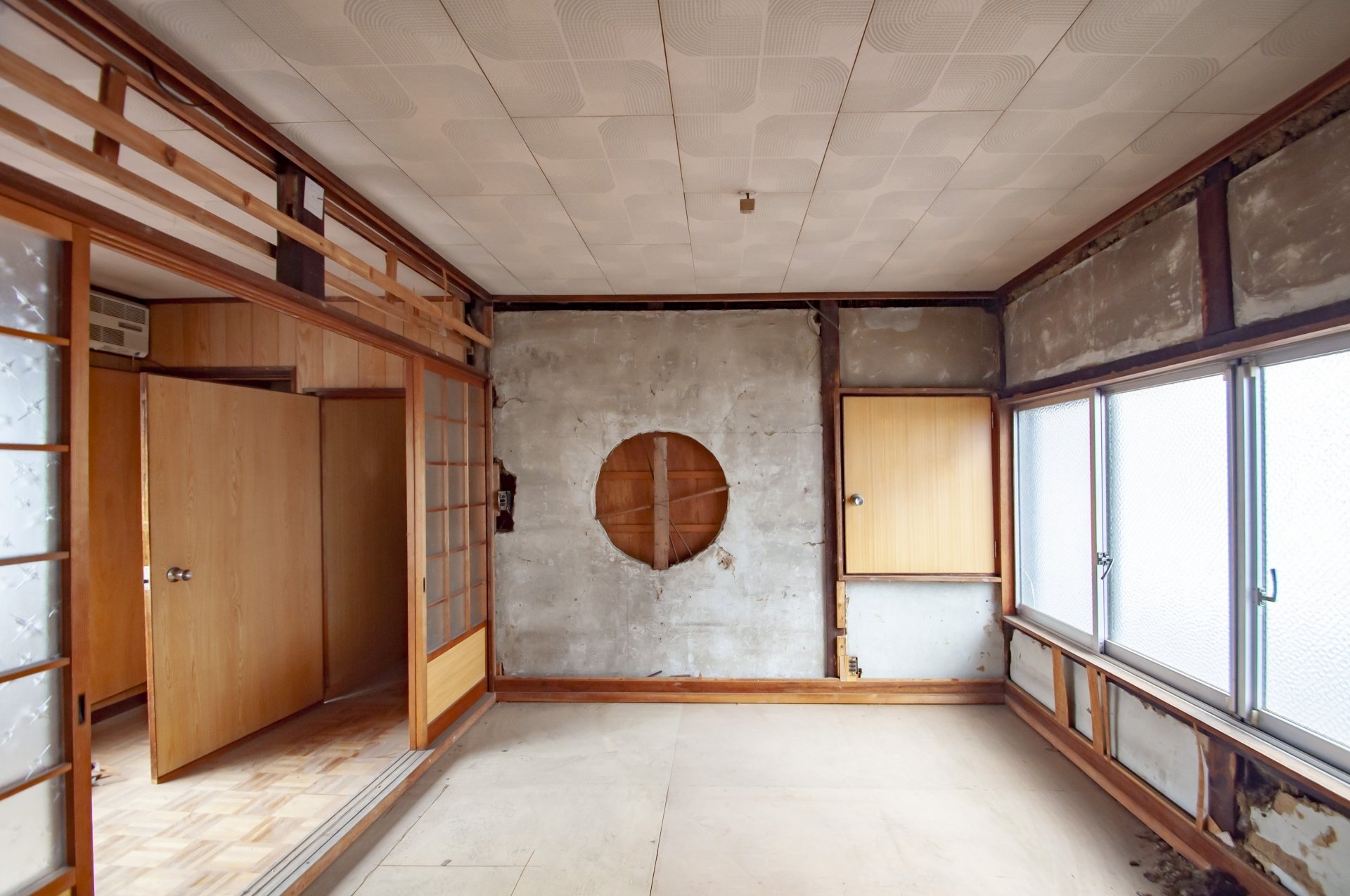In recent years, there has been an active movement among companies to reevaluate company housing and employee dormitories as employee benefits. Although the company housing system had been scaled back since the bubble economy collapse due to cost-cutting measures, it is now making a comeback as part of corporate strategy in response to intensifying competition for talent and rising housing costs in urban areas. This article explains the background behind the renewed interest in company housing and dormitories, key implementation examples, benefits for both companies and employees, motivations for reutilization (such as enhancing recruitment capabilities, improving employee retention, and optimizing costs), and future prospects.
Background behind the renewed focus on company housing and dormitories
Historical trends: The company housing system in Japan originated in the Meiji era, and during the post-war period of rapid economic growth, companies competed to build dormitories and company housing to accommodate young workers from rural areas. At its peak in the early 1990s, it is estimated that 2.05 million households nationwide lived in company housing or dormitories. However, following the economic downturn after the bubble economy burst, many companies divested their company housing, and the number of company housing units continued to decline after peaking in 1993, reaching a record low in 2018. Housing-related expenses as a percentage of welfare benefits have also consistently declined since the 2000s.
Signs of reevaluation: However, in recent years, there has been a noticeable trend toward reevaluating company housing and dormitories. This is due to factors such as the increasing difficulty of securing talent due to the declining birthrate and aging population, and the rising cost of living for young employees in urban areas due to soaring rents. In fact, some surveys point to the difficulty of hiring new graduates and mid-career employees, as well as the rising rents for rental housing in urban areas, as factors behind the increase in company housing. Additionally, recent surveys of new graduates' job-hunting preferences show that “generous welfare benefits” are the top factor influencing their choice of a major company, accounting for 51.5% of responses. Over 60% of students prioritize welfare benefits on par with salary and job content, making the enhancement of welfare benefits—including housing support—essential for attracting top talent.
In this changing environment, company housing and dormitories are being reevaluated not merely as costs but as strategic investments. From the perspective of corporate real estate (CRE) strategy, effectively utilizing idle company housing assets to enhance corporate value has become a key challenge, and there is a growing trend to position company housing as an integral part of business strategy.
Major examples of company housing and employee dormitories
Among recent examples of revived or newly established company housing and dormitories, Itochu Corporation, a major trading company, is noteworthy. After selling its large-scale single-person dormitory in 2000 due to deteriorating performance, the company had not owned any company housing for a long time, but in March 2018, it established a new single-person dormitory for the first time in 18 years. Located in Yokohama's Nihonbashi district, the dormitory is a large-scale facility with seven floors and 361 units. Each private room is equipped with a shower, mini-kitchen, and refrigerator, while shared areas feature a shared kitchen and a sauna-equipped large bathhouse, offering state-of-the-art facilities that prioritize privacy and comfort. Itochu has adopted a policy of requiring all new employees to live in the dormitory, even if they could commute from their parents' home, with the aim of fostering interaction and training among young employees. The dormitory also features a management style that respects employees' autonomy, such as no curfew and no restrictions on overnight stays, dispelling the image of cramped dormitory life.
Itochu Corporation has continued to expand its housing policies, and in 2025, it will construct a new dormitory for female employees, consolidate existing dormitories, and begin accepting new employees starting in April of the same year. In this way, the company is also implementing housing improvements to address diverse employee needs, such as creating a more comfortable working environment for women.
Other companies, such as manufacturing and IT firms, are also reported to be reviving company housing. For example, manufacturers with factories in rural areas are preparing new dormitories near their factories as part of efforts to attract talent from urban areas to rural areas, creating an environment where employees can commute without a car. Additionally, real estate companies are focusing on constructing and renovating dormitories for companies, with proposals such as renovating aging company housing into designs preferred by young employees. All these examples share the common underlying business judgment that improving employees' living environments contributes to corporate competitiveness.
Benefits for companies (strategic advantages of having company housing or dormitories)
Reusing company housing or employee dormitories offers numerous benefits for companies. The main advantages are summarized below.
- Enhanced recruitment competitiveness: As mentioned above, the provision of housing support and other welfare benefits is a powerful selling point for attracting promising talent. More companies are introducing company-leased housing systems, and many large companies are utilizing this system to improve employee satisfaction and recruitment capabilities. In fact, “housing-related welfare benefits” are considered attractive to job seekers and are an effective selling point during the recruitment process. By highlighting the availability of company housing, companies can differentiate themselves from competitors and make it easier to secure talented employees.
- Improved employee retention and engagement: Reducing housing costs leads to higher employee satisfaction, which in turn reduces turnover rates. By supporting employees' living foundations, companies can increase their sense of loyalty and security toward the company, promoting long-term retention. Additionally, living together in the same dormitory can foster cross-departmental interaction among employees and help disseminate company culture. By cultivating an internal community through company housing, you can enhance “employee engagement (commitment to the company),” which ultimately contributes to improved productivity and teamwork.
- Cost optimization and tax benefits: Providing company housing may seem like an increase in costs at first glance, but it can be an efficient investment for companies. For example, with a leased company housing system, there are no fixed asset taxes compared to owning your own property, and management can be outsourced, providing advantages in terms of costs and operations. Additionally, in some cases, providing company housing instead of cash housing allowances can result in tax advantages (e.g., the portion of rent paid by employees is not treated as wages and may be partially tax-exempt). As a result, the benefits employees receive are significantly greater than the company's costs, making it a cost-effective welfare benefit. Furthermore, reusing idle company-owned housing properties can reduce real estate idle costs and improve operational efficiency through the use of housing management outsourcing services.
- Enhancing corporate value and image: Housing policies that prioritize employee well-being serve as a message to both internal and external stakeholders. The decision to invest in housing reflects management's commitment to employee health and support as part of their business strategy, and communicating this externally can enhance the company's image. Furthermore, utilizing company housing for socially meaningful purposes, such as disaster response centers or emergency shelters, can also be evaluated from the perspectives of CSR (corporate social responsibility) and SDGs. In summary, employee-oriented welfare benefits form the foundation for a virtuous cycle of “employee satisfaction = customer satisfaction = increased corporate value.”
Benefits for Employees (Advantages of Company Housing and Dormitories)
Next, let's look at the benefits that company housing and dormitories bring to employees. Employees enjoy numerous benefits, ranging from financial to lifestyle advantages.
- Reduced financial burden: One of the major advantages of company housing or leased housing is that employees can live at a lower rent than in general rental properties. Since the company covers most of the rent, employees only need to pay a portion of their salary (typically lower than the market rate), resulting in increased disposable income and a more comfortable lifestyle. Especially in urban areas with rising rent prices, the company housing system serves as a strong support measure for new hires and young employees. With reduced concerns about housing costs, employees can focus more on their work with peace of mind.
- Improved commuting and living environment: Company housing and single-person dormitories are often located near the workplace, reducing commuting time and alleviating related stress. This allows employees to secure more private time and rest, contributing to their physical and mental well-being. For example, avoiding morning and evening rush hours can significantly reduce fatigue, and ensuring adequate sleep can improve work performance. Additionally, living close to the workplace makes it easier to respond to sudden calls or late-night returns after overtime, offering flexibility in work arrangements.
- Living Support and Convenience: Company housing often provides an environment with well-developed living infrastructure. Some properties come furnished with furniture and appliances, and some employee dormitories offer nutritious meals at low prices in on-site dining halls. This reduces the hassle of cooking and the cost of meals, making it easier to balance work and daily life. Furthermore, when the company has a bulk lease agreement for the property, employees do not need to search for or sign a lease themselves, making the move-in and relocation process smooth. When transferring to a new location, the company arranges housing, allowing employees to start work in a new area without the stress of finding a place to live. By eliminating concerns about living conditions, employees can focus on their work.
- Interaction with colleagues and emotional support: Especially in single-person dormitories, the sense of camaraderie that develops among employees of similar ages is invaluable. For new employees who have moved to the city from rural areas, dormitories provide a sense of security, as they have colleagues and seniors they can consult with outside of work. A community where employees can chat after work and share their concerns has a positive effect on mental health. It can also serve as a place to foster independence, such as holding study sessions or organizing spontaneous events (such as cherry blossom viewing or barbecues) among employees. Such relationships formed in company housing lay the foundation for teamwork within the company and ultimately contribute to strengthening business collaboration.
- Safe and secure housing: Company-provided housing often meets certain standards in terms of location and building safety, providing peace of mind in terms of security and disaster response. If the dormitory has a resident manager, it is also safe in terms of crime prevention, and in the event of an emergency such as an earthquake, residents can help each other. Additionally, while living in company housing, the company may cover the costs of restoring the property to its original condition upon moving out, thereby assuming some of the risks and costs associated with housing. Such support can serve as a significant psychological stabilizer for employees.
As described above, the company housing and employee dormitory system broadly supports employees' economic, living, and mental well-being, thereby enhancing employee satisfaction (ES). It serves as an attractive welfare benefit for employees while also contributing to increased loyalty toward the company and the retention of talented personnel, making it a system that benefits both the company and its employees.
Main motivations for reusing company housing (enhancing recruitment capabilities, retaining talent, optimizing costs, etc.)
Let us now organize the main motivations for companies to strategically repurpose company housing and employee dormitories. While these motivations overlap with the previously mentioned benefits, the following are common objectives among recent cases of revitalization:
- Strengthening recruitment capabilities: In an intensifying talent acquisition competition, excellent welfare benefits provide a competitive advantage over other companies. In particular, company housing and housing allowances are highly attractive to young job seekers, and the impression of being a company that “does not worry about housing” increases the motivation to apply. Given that more than half of new graduates prioritize the availability of welfare benefits when choosing a company, the establishment of a company housing system is considered a powerful tool for attracting promising talent. Companies facing recruitment difficulties tend to place greater emphasis on housing support, which has become a major driving factor behind the revival of company housing.
- Employee retention and reduced turnover: Many companies recognize that providing company housing can help reduce turnover by increasing employee satisfaction. Young employees, in particular, tend to leave the company within a few years of joining, but housing support from the company makes them feel valued, which motivates them to stay with the company for the long term. In fact, companies with generous welfare benefits, such as company housing, tend to have higher employee engagement. Reinstating company housing is an effective strategy for preventing talent loss and ensuring a return on investment in talent development.
- Cost optimization: While maintaining company housing may seem like an increase in costs at first glance, as mentioned earlier, it is also a tax-efficient and financially efficient measure. Compared to paying housing allowances in cash, providing company housing offers a higher net benefit to employees and better cost-effectiveness. Additionally, by reusing idle company-owned housing instead of selling it, companies can avoid the risk of selling at low prices due to real estate market conditions while allocating resources to employee welfare. Furthermore, in recent years, specialized services for managing company housing have become more available, allowing companies to outsource the complex contract and management processes, thereby reducing the burden on HR and administrative departments. This makes it easier for small and medium-sized enterprises to adopt such programs. Overall, the revival of the company housing system can be seen as a management decision that balances the need for enhanced welfare benefits with cost consciousness.
- Responding to employee health and work-style reforms: Providing company housing and dormitories is also linked to policies aimed at managing employee health and promoting work-style reforms. Reducing commuting times directly contributes to improving work-life balance and preventing overwork, while providing nutritionally balanced meals at company cafeterias is part of health management initiatives. Company housing serves as a platform for employee care measures, such as providing shift workers with warm meals late at night and supporting the mental health of single employees through the company housing community. Since the COVID-19 pandemic, there has been a growing need for measures to maintain employee health and connections amid the spread of telework and distributed work, and company housing is being reevaluated as part of these efforts.
- CRE Strategy and Asset Utilization: For companies that own company-owned housing acquired during the bubble economy, repurposing company housing is also a challenge in corporate real estate strategy. While selling them could generate temporary revenue, there is a risk that letting go of these properties could hinder future talent acquisition, making it difficult to dispose of them lightly. As a result, flexible utilization strategies are being explored, such as renovating idle company housing properties and reusing them for current employees, or converting part of them into general rental properties to generate revenue. The motivation to strategically leverage company housing as a “sleeping asset” lies at the core of the recent trend toward the revival of company housing.
Driven by such motivations, many companies are beginning to reevaluate the value of company housing and employee dormitories. Rather than merely reviving them as welfare benefits, there is a growing movement to reposition them as strategies to enhance corporate value from both the human resources and real estate perspectives.
Future Outlook: Will Company Housing and Employee Dormitories Become a Key Element of Corporate Strategy?
The trend toward reusing company housing and employee dormitories is expected to continue and expand further in the future. Let us consider some potential future developments.
- Further spread to other companies: The trend toward reviving company housing systems may extend beyond large companies to medium-sized and small businesses. In particular, companies with bases in rural areas or those struggling to secure specialized talent may find that providing robust housing support is key to their survival. Recently, companies offering housing agency services have begun providing affordable packages tailored to SMEs, creating an environment where such programs can be easily adopted regardless of company size. Some companies are even considering eliminating housing allowances to introduce housing programs, and depending on the state of the labor market, providing housing could become an industry standard.
- High-functionality and multifunctionality of company housing: The image of traditional, outdated single-person dormitories will be refreshed, and modern, high-value-added company housing will increase. Specifically, private rooms to ensure privacy, well-equipped shared facilities (fitness rooms, workspaces, cafeterias, etc.), and high-speed internet access are expected to become standard. In addition to improving the quality of living spaces, these facilities will also serve as backup bases in emergencies. For example, some companies are planning to install emergency power generators and stockpile supplies in company housing to function as “safety centers” that can accommodate employees and their families in the event of a disaster. Additionally, ideas such as flexibly utilizing vacant rooms as temporary accommodations for short-term business travelers or interns to contribute to overall corporate productivity are also being considered.
- Diversification of housing support systems: In addition to the practice of requiring all employees to live in company-owned dormitories, housing support systems that respect employee choice are likely to develop. For example, the “rental housing subsidy” system, where companies subsidize the rent of private rental properties chosen by employees instead of providing company-owned dormitories, is already adopted by many companies. In the future, flexible system designs such as hybrid models combining leased company housing and company dormitories, and cafeteria-style plans where employees can freely choose between housing allowances, company housing, and remote work allowances, may become more common. Some companies may also begin providing shared housing for employees in major cities so that they can stay there when they need to come to the office even after remote work becomes widespread. It is expected that the form of company housing will diversify in line with the diversification of work styles.
- Public-private collaboration and institutional support: As securing the workforce becomes a social issue, there is also an expectation that the national and local governments will support companies in developing company housing. For example, from the perspective of regional revitalization, policies such as providing subsidies for companies that hire people who move to rural areas to develop company housing, or expanding tax incentives for converting vacant houses into company housing, could be considered. In fact, some initiatives have already begun to match vacant houses in rural areas with companies seeking to secure human resources. In the future, it may be possible to establish a scheme in which public institutions, companies, and real estate companies collaborate to build a company housing network that covers the entire region.
- Responding to changes in the labor market: As the practice of hiring new graduates en masse is reviewed and the employment of mid-career hires and global talent increases, the nature of company housing will also change. When accepting talent from overseas, company housing could be utilized as a venue for international exchange or as a hub for promoting diversity by fostering interaction among employees with diverse backgrounds. Conversely, if job-based employment becomes more prevalent, where specialized talent is hired as needed for project-based work, there may be a greater emphasis on short-term housing support tailored to specific needs rather than permanent company housing. In this way, companies will need to flexibly update their company housing systems in response to changes in the employment environment.
In summary, company housing and employee dormitories are shifting in value from “outdated welfare benefits” to “strategic investments.” Companies are beginning to take housing environment improvements seriously as a means of attracting and retaining talent, and are evolving their housing systems through creative approaches that combine effective use of real estate. Company housing lies at the intersection of corporate real estate and human resources strategy and will become an important theme in future business management. How companies will evolve their “housing benefits” will be closely watched. To remain an employer of choice, housing support strategies—including the repurposing of company housing and dormitories—will undoubtedly become an indispensable element.

Daisuke Inazawa
Representative Director of INA&Associates Inc. Based in Osaka, Tokyo, and Kanagawa, he is engaged in real estate sales, leasing, and management. He provides services based on his extensive experience in the real estate industry. Based on the philosophy that “human resources are a company's most important asset,” he places great importance on human resource development. He continues to take on the challenge of creating sustainable corporate value.

.png)











![Definition, Role, and Selection Criteria for Real Estate Management Companies [Focusing on the Importance of Human Resources]](https://app.ina-gr.com/hs-fs/hubfs/AI-Generated%20Media/Images/The%20image%20shows%20a%20businessman%20in%20a%20suit%20holding%20a%20smartphone%20and%20concentrating%20on%20checking%20something%20against%20the%20backdrop%20of%20a%20modern%20office%20building%20Beside%20him%20is%20a%20large%20glass%20window%20letting%20in%20sunlight%20The%20businessmans%20expression%20is%20serious%20his%20ey.jpeg?width=550&height=395&name=The%20image%20shows%20a%20businessman%20in%20a%20suit%20holding%20a%20smartphone%20and%20concentrating%20on%20checking%20something%20against%20the%20backdrop%20of%20a%20modern%20office%20building%20Beside%20him%20is%20a%20large%20glass%20window%20letting%20in%20sunlight%20The%20businessmans%20expression%20is%20serious%20his%20ey.jpeg)

